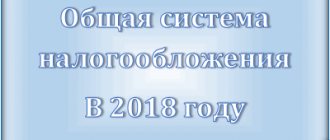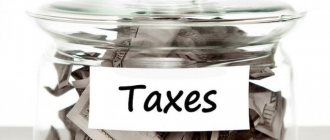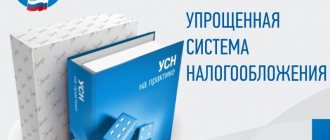There is no need to be afraid of taxes. Especially if taxes are written as simply and clearly as in our article. I read and understood which tax regime to choose, and how not to overpay the tax office. Perhaps the most important information if you are planning to open your own business (save it in your bookmarks).
Sometimes fear of taxes is what separates a person from becoming a sole proprietor. It seems that you can get confused in reporting, delay payments to the tax office and receive many fines. In fact, it's not that scary. We tell you how taxes for individual entrepreneurs are structured.
Individual entrepreneur taxation systems
There are five tax regimes in Russia, and everyone can choose the one that best suits the specifics of your business. Taxes differ in rate, base, period, calculation procedure and payment deadlines. All modes can be divided into two types: general and special.
To choose the most profitable tax system, you must initially understand the structure of your business: estimated income and expenses, number of employees, what types of activities you will engage in, who your clients will be, etc. Let's take a closer look at what types of taxation systems exist in Russia.
Collection efficiency
The amount of total tax debt (see the Federal Tax Service website, section “Debt Structure”) as of July 1, 2021 is equal to 1,951.1 billion rubles, which is 8.1% of the projected tax revenues of the consolidated budget of the Russian Federation for 2021.
The effectiveness of compulsory collections increased by 20.26% (as of July 1, 2021, 664 billion rubles were recovered compared to the same figure for the same period in 2021, which amounted to 535.5 billion rubles). In relation to the additional accrued debt, 67% is actually collected (2 percentage points by 2021).
As of August 1, 2021, the debt to income ratio, which is used to assess the effectiveness of debt management, was 7% (this is the minimum value for five years).
General taxation system
The general taxation system (GTS) is the basic taxation system on which all individual entrepreneurs are by default, provided that during registration you did not apply for a special tax regime.
The advantage of OSN is the ability to conduct any type of activity without any restrictions. However, at the same time, you will have to pay all taxes possible in the Russian Federation, and at the standard rate for an individual. On OSN you have to pay:
- Income tax (NDFL) – 13%,
- Value added tax (VAT) - from 0 to 20%,
- Fixed insurance premiums for yourself – RUB 36,238. per year (data for 2021),
- If you have employees, you are required to pay personal income tax (13%) and contributions to non-state insurance funds for them,
- If you own property, land or transport, you additionally pay the corresponding taxes to the budget.
This tax regime is suitable for you if you work with VAT payer organizations, or are engaged in activities that are not allowed in other n/a systems.
What are insurance premiums
For myself
All individual entrepreneurs, except the self-employed, must pay insurance premiums for themselves. No reporting is required.
The amount of contributions is fixed for incomes not exceeding 300 thousand rubles, it changes every year and takes effect from January 1. Insurance premiums will likely increase in 2021.
In 2021, individual entrepreneurs must pay 32,448 rubles. for pension insurance, as well as 8,426 rubles. for health insurance. These fees must be paid by December 31, 2021.
For income over 300 thousand rubles. you need to pay an additional 1%, but the total amount cannot exceed RUB 259,584. These contributions must be paid no later than July 1, the next tax period, that is, July 1, 2021.
For employees
If an individual entrepreneur has employees, then they must also pay insurance premiums to the tax service. This includes:
- pension insurance payments: 22%,
- social insurance payments: 2.9%,
- health insurance payments: 5.1%
Additionally, you need to pay a contribution against industrial accidents to the Social Insurance Fund; it ranges from 0.2% to 8.5, depending on the main type of activity of the individual entrepreneur.
Insurance premiums are paid monthly, no later than the 15th day of the month following the month of payment. For some individual entrepreneurs, reduced rates for insurance premiums for employees are provided; their list can be viewed on the Federal Tax Service website.
Also, individual entrepreneurs must submit reports on the payment of insurance premiums to the Federal Tax Service every quarter. You need to report, even if there were no contributions in the quarter, this still needs to be reflected in the tax report. Separately, it is necessary to report on contributions for injuries to the Social Insurance Fund. It is better to leave this work to an accountant or outsource it.
Simplified taxation system (STS)
A simplified taxation system helps reduce taxes and simplify the reporting procedure. Therefore, the simplified tax system is very popular among entrepreneurs. This mode has two options:
- Simplified taxation system Income – 6% of the amount of income. This is a good option if your business-related costs are small, because costs cannot be taken into account in this mode.
- Simplified Taxation System Income – Expenses - 15% of the difference between income and expenses. This type of tax will be more beneficial if business-related expenses amount to 60% of turnover or more.
The authorities of the constituent entities of the Russian Federation can vary the tax rate from 1 to 6% (for non-income income), and 5 – 15% (for the simplified tax system income - expenses). In addition to taxing income or profit under this tax regime, you pay the following types of taxes:
- Fixed insurance premiums for yourself – RUB 36,238. per year (data for 2021),
- If you have employees, you pay personal income tax (13%) and contributions to non-state insurance funds for them,
- If you own property, land or transport, you pay the appropriate taxes to the budget.
The advantage of the simplified tax system is the reduction in the number of taxes. Individual entrepreneurs under this tax regime are exempt from paying:
- personal income tax,
- Tax on property of individuals used in business activities,
- VAT (with the exception of operations for the import of goods into Russia).
Entrepreneurs using the simplified tax system have the right to reduce the amount of advance tax payments by the amount of insurance premiums paid:
- It is allowed to deduct all contributions for oneself when the individual entrepreneur is not the employer,
- You can deduct contributions both for yourself and for employees, but not more than 50% of the tax value when the individual entrepreneur is the employer,
- From 2021, taxpayers can also deduct the amount of trade tax paid.
To switch to the simplified tax system, a company must meet the following criteria:
- Income should not exceed 150 million rubles. in a year,
- The number of company employees must be less than 100 people,
- The residual value of fixed assets must be less than 150 million rubles,
- The share of other organizations in the authorized capital is less than 25%.
You cannot switch to the simplified tax system if you have branches, produce goods with excise stamps (for example, tobacco or alcohol), are engaged in mining, insurance, banking services, investment activities, gambling or microfinance activities. The simplified tax system is regulated by Chapter 26.2. Tax Code of the Russian Federation.
Structure of taxes and fees
A system of taxes and fees organized on clear and transparent principles serves as a significant assistance in the performance by citizens and legal entities of their obligations to make mandatory payments.
Art. 72 of the Constitution of the Russian Federation refers the establishment of taxation principles to the joint subject of jurisdiction of the center and regions. In connection with this circumstance, questions arise regarding the procedure for separating payments received from different budgets.
Another problem is the hierarchy of acts adopted by federal, regional and local authorities in the tax field. The main possible conflicts are resolved by the norms of Chapter 2 of the Tax Code.
Types of taxes and fees in the Russian Federation include 3 levels. These include the following system elements:
- federal mandatory payments;
- regional taxes and fees;
- payments established on the territory of municipalities.
The first includes payments established throughout the country. The second includes taxes and fees payable by persons living in a particular region. In the case of local payments, the corresponding obligation applies to residents of that municipality.
The criterion for delimitation is not the budget to which the payment is transferred, but the territory in which the established rules are in force, defining the elements of the tax and fee.
Specific types of taxes and fees included in each element of the system may change by adjusting the legislation of the Russian Federation.
The law prohibits the establishment of any additional payments other than those provided for in the Tax Code. Otherwise, there would be a risk of chaotic development of the tax and fee system. This would significantly complicate the implementation of the principles of freedom of economic activity.
Unified tax on imputed income (UTII)
The single tax on imputed income (popularly called “imputed income”) is similar in essence to the patent system. With this type of tax, you also pay tax not on real income, but on imputed income - potential income calculated by the state. UTII is used for certain types of activities and can be used along with OSN or other non-profit regimes.
The UTII rate is 15%, but regional authorities can reduce it to 7.5%. In addition to the tax on imputed income, you also pay fixed insurance premiums for yourself, as well as personal income tax and insurance premiums for employees, if any.
Entrepreneurs using UTII or PSN do not pay personal income tax, VAT (except for VAT when importing goods into the Russian Federation) and property tax (except for property for which the tax is calculated from the cadastral value). But taxes on transport and land are paid in the same way as under the simplified tax system or special tax system.
Officially, UTII will be valid until 2021, although there are currently discussions about extending this period. Also, UTII is not valid in some regions, for example, Moscow. The list of activities for the use of UTII is limited; permitted types include:
- Providing household or veterinary services;
- Providing services for repair, maintenance, washing of motor vehicles, or their storage in paid parking lots;
- Providing services for the transportation of passengers and goods, provided that the organization owns (rents) no more than 20 vehicles;
- Retail trade services through stores or pavilions with a sales floor area of no more than 150 m2 or without sales floors;
- Catering services with a hall area for serving visitors of no more than 150 m2 or without a hall for serving visitors;
- Placement of outdoor advertising using advertising structures, as well as placement of advertising using external and internal surfaces of vehicles;
- Providing services for the temporary possession and (or) use of premises that do not have sales areas or a hall for serving visitors, as well as the temporary possession and (or) use of land plots for business activities.
At the same time, the following types of organizations will not be able to switch to UTII, even if they meet the previous conditions:
- Carrying out business activities within the framework of a simple partnership agreement;
- Organizations classified as the largest taxpayers;
- Organizations with more than 100 employees;
- Organizations in which the share of participation of other organizations is more than 25 percent;
- Organizations that are payers of the Unified Agricultural Tax;
- If a municipal entity (Moscow, St. Petersburg, Sevastopol) establishes a trade fee in relation to such types of activities;
The amount of UTII payable is considered as the product of the basic profitability, adjusted by special coefficients (K1 and K2) and the value of the physical indicator for this type of activity. The amount of basic income varies depending on the type of activity, but the maximum can be 10,000 rubles. per month A detailed description of these indicators can be found in Article 346.29 of the Tax Code of the Russian Federation.
Thus, UTII is suitable for retail trade, catering and vehicle maintenance companies with no more than 100 employees. UTII is regulated by Chapter 26.3. Tax Code of the Russian Federation.
How to pay taxes
Due to the coronavirus, the Federal Tax Service has postponed the payment of part of the taxes and the submission of some reports for 2021. We wrote about this in the article “How the Federal Tax Service will help small and medium-sized businesses.” Many of these measures are no longer relevant, but some are still in effect; you can check them on the Federal Tax Service website.
You can pay taxes on the Federal Tax Service website, both for yourself and for your employees. Another way is State Services . The easiest way is to first generate a receipt on the Federal Tax Service website, because Most of the data will be loaded into it automatically. You can also pay taxes from your bank account. Using this link you can go to the account opening page and open an account with Delobank.
The Federal Tax Service also requires filing declarations. You can submit them in paper form - by mail or by appearing in person at the tax office. Declaration templates can be obtained from the Federal Tax Service website. Another way is to submit a declaration electronically; this can be done directly on the Federal Tax Service website. It's free, but this method is quite complicated, because... You will need to enter a lot of data manually (information about individual entrepreneurs, the amount of income, advance payments and insurance premiums).
Another option is to contact an electronic document management operator. These are services that will generate declarations for you, but for a fee. The tax office is not against it - a list of such services can be found on the Federal Tax Service website.
Patent tax system (PTS)
This tax regime is designed specifically for individual entrepreneurs. When choosing this mode, just like on UTII, you pay tax not on actual income received, but on the potential annual income of the business. The tax amount will be different for different regions, since the profitability in large cities will be noticeably different from small ones.
To use PSN, you need to purchase a patent, which will give you the right to engage in a certain type of activity for a period of 1 to 12 months. At the same time, an entrepreneur has the right to obtain several patents for different types of activities.
The tax rate on PSN is 6% (the authorities of the constituent entities of the Russian Federation can reduce it to 4% or 0). Fixed insurance premiums do not reduce it (as is the case with OSN, simplified tax system and UTII). In addition to 6% of potential income, you pay fixed insurance premiums for yourself, as well as personal income tax and insurance premiums for employees (if any).
Entrepreneurs on the PSN are exempt from paying personal income tax, property tax for individuals used in business activities, and VAT (with the exception of activities related to the import of goods into the Russian Federation).
To apply the patent tax system, the income of your business should not exceed 60 million rubles, and the number of employees should not exceed 15 people.
The Tax Code specifies the types of business activities that can apply this tax regime. Their number is significantly larger than on UTII, and amounts to more than 60 types of activities. Let's consider the main ones:
- Retail trade (catering) services with or without a sales area (room for serving visitors) of no more than 50 m2,
- Repair, tailoring, cleaning of clothes and shoes,
- Hairdressing and beauty services,
- Repair of furniture, household equipment, watches, etc.,
- Repair of computers and communication equipment,
- Maintenance of motor vehicles and motor vehicles,
- Services for the transportation of passengers and goods by road or water transport,
- Home renovation and other services,
- Services for training the population, translation activities, as well as conducting sports activities,
- Services of photo studios, as well as photo and film laboratories,
- Rental and excursion services,
- Agricultural services and other activities,
- Collection, processing and disposal of waste, etc.
For these types of activities, the amount of potential annual income is established, which cannot exceed 1 million rubles. per year, but regional authorities may, at their discretion, increase this limit.
PSN is suitable for small businesses that are engaged in one of the above types of activities. This is also a good opportunity for a start-up business: you can purchase a patent for 1 - 2 months to assess demand and development prospects. At the same time, there are more permitted types of activities than on UTII, but the restrictions on income and number of employees are stricter. PSN is regulated by Chapter 26.5. Tax Code of the Russian Federation.
Please note that tax under the simplified or general taxation system is calculated based on the amounts of actual income. With UTII and PSN, the tax is calculated on the amount of potential income, so you will have to pay tax even if you did not conduct any activity in this reporting period.
What happens if you don't pay taxes?
Let us clarify right away that it is better to pay taxes and submit returns on time. The Federal Tax Service in Russia works quickly and will quickly notice a violation, and the sanctions for violations are quite significant.
The size of the fine depends on the taxation system. Some systems have their own fines, for example, you will have to pay 1 thousand rubles for UTII. for evading the appearance of a person called as a witness. And for violating the rules for working with cash register equipment at OSNO, the fine will be from 10 thousand rubles. But the general rules are:
Unified Agricultural Tax (USAT)
Under this taxation system, the lowest tax rate is fixed - 6% of the difference between income and expenses. The laws of the constituent entities of the Russian Federation may further vary this rate from 0 to 6%.
In addition to income tax, you also pay fixed insurance premiums for yourself, insurance premiums and personal income tax for employees (if any), as well as corresponding taxes for owning property, transport and land.
This tax regime is suitable for enterprises operating in the agricultural sector. These include companies where more than 70% of their income comes from:
- Production, processing and subsequent sale of agricultural products,
- Providing services to agricultural producers in the field of production and processing of agricultural products, as well as services in the field of livestock and crop production,
- Activities for catching aquatic biological resources and producing fish and other products from them.
At the same time, the Unified National Economic Economy will not be suitable for state-owned, budgetary and autonomous institutions, as well as companies that produce excisable goods. The Unified National Economy is regulated by Chapter 26.1 of the Tax Code of the Russian Federation.
1.2. Taxation in the pre-Petrine era (IX-XVII centuries)
In the ancient Slavic state (late 9th century), the main source of treasury income was tribute - a direct tax (tax) collected from the population. The first mention of the collection of tribute dates back to the era of Prince Oleg (? - 912). At the same time, ancient chronicles refer to military indemnity as “tribute”.
As the Kyiv feudal state grew and strengthened, tribute ceased to be an indemnity and turned into a tax. The unit of tribute in Kievan Rus was “smoke”, determined by the number of stoves and pipes in each household, ralo or plow (a known amount of arable land). Taxation “by smoke” has been known since ancient times.
When collecting some direct taxes, the “smoke” account was preserved in Russia until the 17th century. (distribution of worldly duties, money for military men, for the ransom of prisoners, streltsy tax), and in Transcaucasia - until the beginning of the 20th century. The tribute was paid in consumer goods (furs, etc.) or in money - “a shlyag from a rala” (a ral was understood as a unit of taxation - a plow or a plow, and a shlyag - Arabic coins, a means of payment of that time in Rus').
Tribute was collected in two ways: “by cart” and “by people.” By “carriage” was meant a system for bringing tribute to the prince (grand duke), and by “polyudye” - a system of collecting tribute by equipping expeditions. Initially, tribute was collected with the personal participation of the prince and his squad (polyudye); later, places for collecting tribute and the persons responsible for collecting it were established. Tribute as a direct tax existed in the 11th-12th centuries. and the first half of the 13th century.
During the time of the Golden Horde (1243-1480), various kinds of taxes and fees from the tax-paying population appeared, collected mainly in a pay-as-you-go method. There are 14 known types of “Horde burdens”, of which the main ones were: “exit” (“tsar’s tribute”), a tax directly to the Mongol Khan; trade fees (“myt”, “tamka”); carriage duties (“pits”, “carts”); contributions for the maintenance of Mongolian ambassadors (“food”), etc.
In the 13th century. tribute was collected in favor of the khans of the Golden Horde (Horde exit), it was paid by the princes starting with Yaroslav Vsevolodovich (1191-1246), in 1236-1238. reigned in Kyiv, from 1238 - Grand Duke of Vladimir) for more than 200 years. In 1257, to collect tribute, the Tatar enumerators conducted the first population censuses (Suzdal, Ryazan, Murom, Novgorod lands). The exit was levied on every male soul and on livestock.
In the XIV-XV centuries. In addition to the Horde tribute, tribute was collected from the free population, which was sent directly to the princely treasury - in the form of in-kind fees. Under John III (1440-1505, Grand Duke of Moscow from 1462) in 1480, payment of the exit was stopped. Although in treaty and spiritual documents even after 1480 there are references to the withdrawal of the Horde, these funds were used to support the Tatar princes living in Russia. In addition, John III secured the exclusive right of the treasury to process hops, brew honey and beer - honey tribute. In the XV-XVI centuries. there was a duty for the right to sell alcoholic beverages - yaeusia.
By the 14th century In the Moscow state, a feeding system developed - granting the right to govern a certain territory for service to the Grand Duke (prince). Formally, the powers of the feeder were limited by statutory charters. The feeder appointed his servants as collectors of duties (duties) and direct taxes (tiunas).
An appeal against the actions of the collectors appointed by the feeder was carried out by submitting a petition (complaint) to the Grand Duke (prince). The feeder received a list of income, “how he should collect food and all sorts of duties,” and the population was given the right to petition for the abuses of the governors. The gatherings were timed to coincide with a specific time - the harvest.
From the end of the 10th century. road tolls were levied (first in favor of the Golden Horde, then in favor of the princes and monasteries). It was collected in the form of toll (on transported goods), anniversary (from merchants), bridging and transportation (on people and goods). Numerous road duties were abolished only in 1654, and bridging and transportation - in 1753.
In the feudal period (XIII-XIV centuries), in addition to the indicated types of taxation, judicial and trade duties appeared, as well as duties on salt varnishes, silver casting, etc. A living duty was levied for the right to have warehouses, a trade duty for the right to set up markets. The court fee “vira” was levied for murder, the fee “sale” was levied for other crimes. By the beginning of the 17th century. tribute or given money began to be called a whole group of taxes (except for tribute - direct state tax) levied on black-growing peasants and townspeople.
From the second half of the 16th century. taxes and fees were collected in cash. In wartime, emergency taxes were introduced: pishchal money was intended for the purchase of firearms, emchuzny money was intended for the production of gunpowder, and polonyanyny money was levied for the ransom of polonyany people - people captured by the Tatars and Turks, who made frequent raids on the southern territories. In 1679, Polonian money became part of the Streltsy money, which was a tax on the maintenance of the Streltsy army.
SEE ALSO: Principles and stages of tax planning
Under Ivan IV the Terrible (1530-1584), in 1555, the collection of quarter money (cheti money), which was a tax levied on the population for the maintenance of officials, was established. Their collection was carried out by cheti - central government institutions (XVI-XVII centuries), which were in charge of collecting various types of taxes (defense, streltsy, yam, polonyanichny money, customs and tavern duties). By the 17th century There were six operating chains: Vladimirskaya, Galitskaya, Kostroma, Nizhny Novgorod, Ustyug and Novaya.
Even during the times of the Golden Horde, the term “tax people” appeared, meaning noble persons who took tribute to the khans. Under John IV, tax people were attached to governors and collected various types of duties from cities and district residents; this is an analogue of Western European tax farmers.
Since 1556, reforms of state and local government were carried out, feeding (the system of maintaining officials at the expense of the local population) was eliminated, the power of governors and volostels was abolished, and provincial and zemstvo institutions were established in their place.
During the reign of Mikhail Fedorovich (1596-1645, tsar from 1613, the first tsar of the Romanov family), the collection of taxes began to be based on scribe books. Service people living in towns were subject to a common townsman tax. The term “tax” sometimes meant all types of direct taxes.
The tax was imposed not on a member of the community, but on a certain unit, district, volost as a set of farms. Civil service assigned by the government, military service, palace service, court service, and partly belonging to the merchant class were exempt from taxes. Since the 17th century these privileges began to be subject to restrictions.
In the XV-XVI centuries. (the period of formation of a centralized state), the tax became widespread, going to the treasury of the Moscow prince (later the tsar), levied as a tax. This type of taxation gets its name from “plow”.
The plow has been a unit of taxation in the Moscow State since the 13th century. until the middle of the 17th century, when the plow began to be replaced by a new tax unit - the “living quarter”. In different periods in certain territories, the meaning of the plow changed several times.
Table of taxation systems for individual entrepreneurs
| Tax regime | Restrictions | Object n/a | Tax rate | Reporting |
| OSN | No limits | Income of an individual, with the possibility of applying a tax deduction | 13% | Tax records are maintained in KUDiR. Reporting: 3-NDFL at the end of the year and quarterly VAT return |
| USN Income | Income less than 150 million rubles/year and less than 100 employees | Income | 1 — 6% | Accounting is maintained in KUDiR, reporting is one annual declaration. If there is income, the individual entrepreneur pays tax advances every quarter, and at the end of the year - the final payment |
| USN Income – Expenses | Difference between income and expenses | 5 -15% | ||
| UTII | Less than 100 employees, there are restrictions on types of activities | Potentially possible income based on the state established | 7 — 15% | There is no need to keep records, reporting is a quarterly UTII declaration. Individual entrepreneur pays a fixed amount every quarter |
| PSN | Income less than 60 million rubles/year and no more than 15 employees, there are restrictions on types of activities | Potential income based on patent value | 0 — 6% | Accounting is carried out in the income book; there is no need to submit a declaration. An individual entrepreneur buys a patent for a period of 1 to 12 months within a calendar year |
| ESNH | Only agricultural producers, no more than 300 employees | Difference between income and expenses | 0 — 6% | Accounting is kept in KUDiR, reporting is one annual declaration of the Unified Agricultural Tax. Individual entrepreneurs pay advances on taxes, at the end of the year - final payment |
Appealing decisions, actions, or inactions of tax authorities
In 1 sq.
In 2021, the number of complaints about decisions on on-site inspections decreased in proportion to the decrease in the number of inspections themselves by 42%, and the number of subsequent appeals to the courts decreased by 11.4%. In 10 months In 2021, these indicators increased and amounted to 47.3% and 20%, respectively.
Below are the results of consideration of tax disputes in arbitration courts, formed on the basis of statistical data from the Judicial Department and the Pravo.ru portal.
Results
Today in Russia there is a basic taxation regime (OSNO), under which taxes such as income tax (NDFL), VAT, and property tax are paid. Under this taxation regime, the tax burden is quite high and accounting is carried out in full. If certain criteria are met, it is possible to replace OSNO with other (special) regimes, which reduce the total number of taxes paid and simplify accounting.
Find out which tax system to choose for an LLC here.
You can find more complete information on the topic in ConsultantPlus. Free trial access to the system for 2 days.
Transport tax in 2021
What should vehicle owners prepare for next year?
The news may make some happy, while others may be upset. Everything will remain unchanged. The transport tax approved by the provisions of the federal law of the Russian Federation will continue to be a mandatory payment for vehicle owners, the regular payment of which will be monitored by regional government structures. There are no plans to increase the collection rate, nor to change the list of persons subject to the obligation to pay this tax. We are talking about the owners of: passenger cars; helicopters; motorcycles and scooters; snowmobiles; buses of different sizes and dimensions; motor boats and yachts; transport on pneumatic and caterpillar tracks.
It is still not worth counting on the absolute abolition of the transport tax, which annually brings about 146 billion rubles to the federal budget, in a crisis. However, there will be some changes in the system related to the timing of payment: Legal entities will be required to pay the fee before February 1, 2018 and at the same time immediately make a deposit for the next reporting period. Individuals will have to pay their tax bill by December 1, although previously receipts from vehicle owners were accepted only until October 1. This is good news for drivers - now they will have enough time to find the required funds.
The rules of the calculation system remain the same, and the fixed tax rate for transport will be calculated in the same way as before, based on three factors: the year of manufacture of the transport; duration of its operation; engine power. It is necessary to clarify that the collection coefficient for each region will be individual, so Moscow residents will not be able to be equal in the issue of transport taxation to St. Petersburg or Krasnodar, and vice versa.





